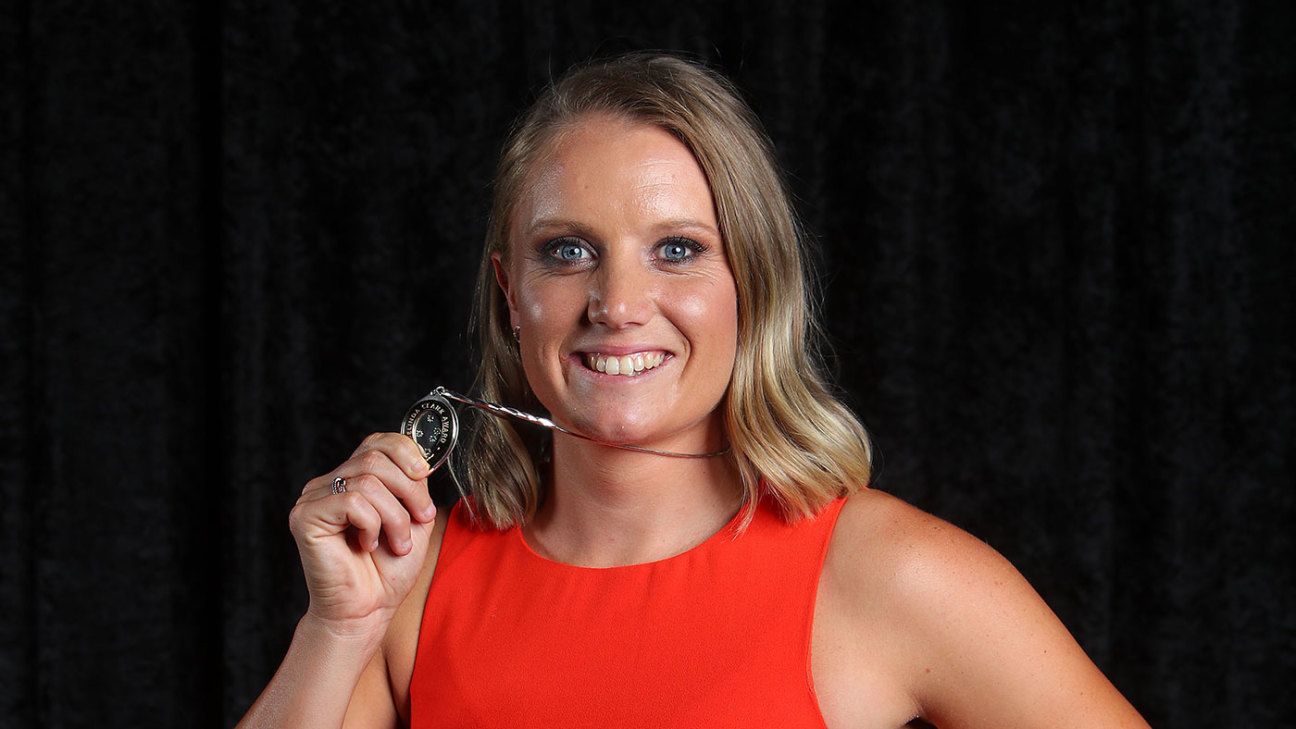
Australia wicketkeeper-batsman Alyssa Healy has said she understands the reasons for the gender pay gap in cricket but believes the women's game will continue to push for equal pay.
Healy has become one of the stars of the sport after a memorable run of form, that saw her named Player of the Tournament when Australia won the T20 World Cup last year and continued into a prolific home season which included her winning the Belinda Clark medal.
The women's team were a shining light for Australian cricket last season, following their T20 success with home series victories against New Zealand in T20s and ODIs, and Healy rose to being one of the best players in the world.
"I'm realistic in saying that it's the men's team who are bringing in most of the money," Healy told Nine's 60 Minutes in an interview alongside husband Mitchell Starc. "And they deserve the amount of money that they're getting, while we keep building our game.
"I've got no doubt that one day the women's game will do exactly the same. There's more opportunities for young girls and older girls like me to go out and play for their country and actually get paid for what we're doing. So I think that's pretty special."
Under the 2017 Cricket Australia pay deal, the women were brought onto the same base pay as the men, although overall they remain a long way off being on a level footing.
When Starc was asked about the pay difference, he took a diplomatic line. "It's not for me to determine what I get paid and what she gets paid. That's up to Cricket Australia," he said.
The women's game in Australia is, along with England, the most advanced in the world with the Women's Big Bash League having helped attract a large audience of women and young children. Next season the WBBL will be played in its own window - during October and November - for the first time rather than running concurrently with the men's Big Bash.
Next year Australia will defend their T20 title on home soil. The final will be staged at the MCG on March 8 - International Women's Day - and there is the ambition to play it in front of a record crowd for a women's sporting event. That figure is currently the 90,185 who attended the FIFA Women's World Cup final between USA and China in 1999.















 Phone: (800) 737. 6040
Phone: (800) 737. 6040 Fax: (800) 825 5558
Fax: (800) 825 5558 Website:
Website:  Email:
Email: 






